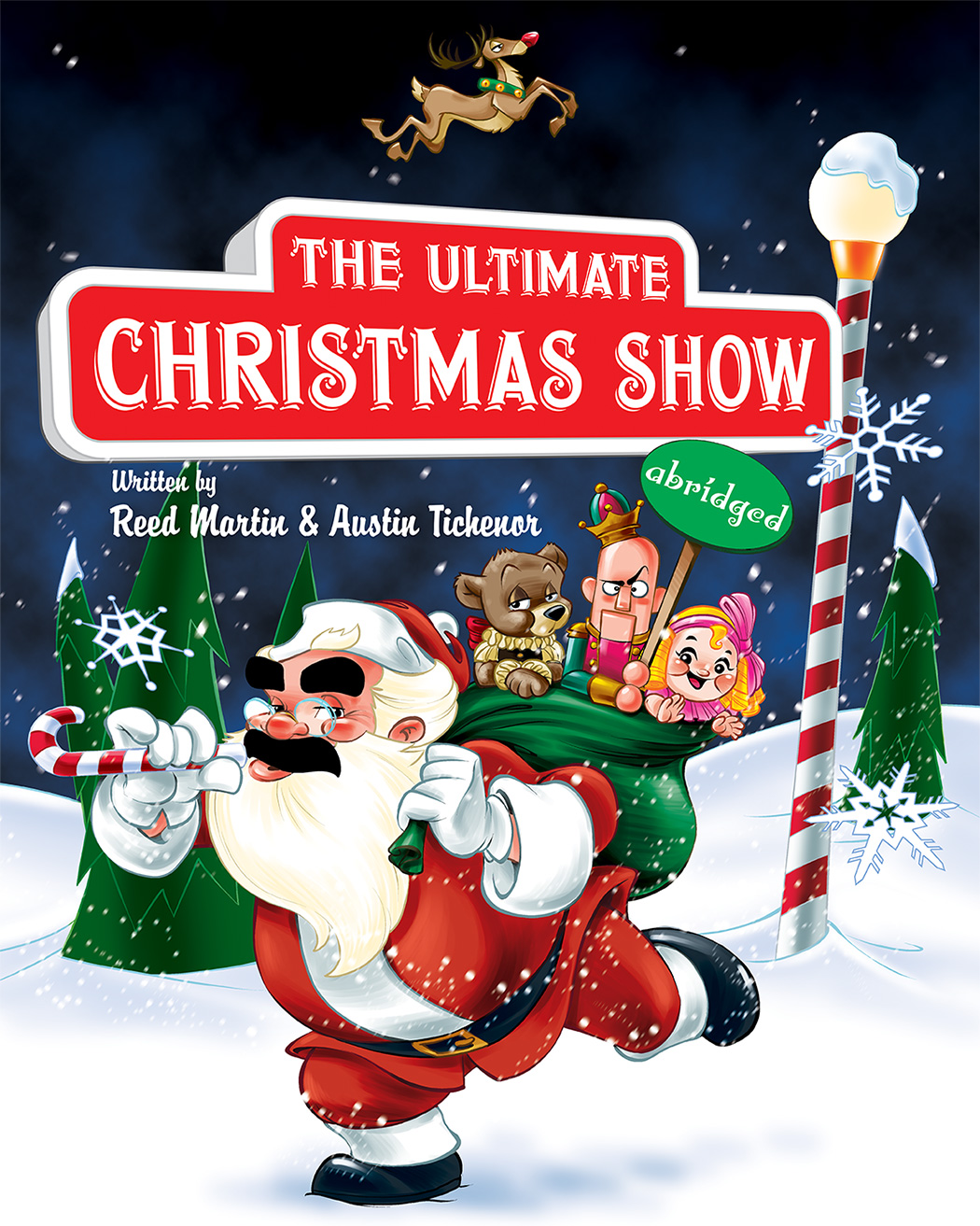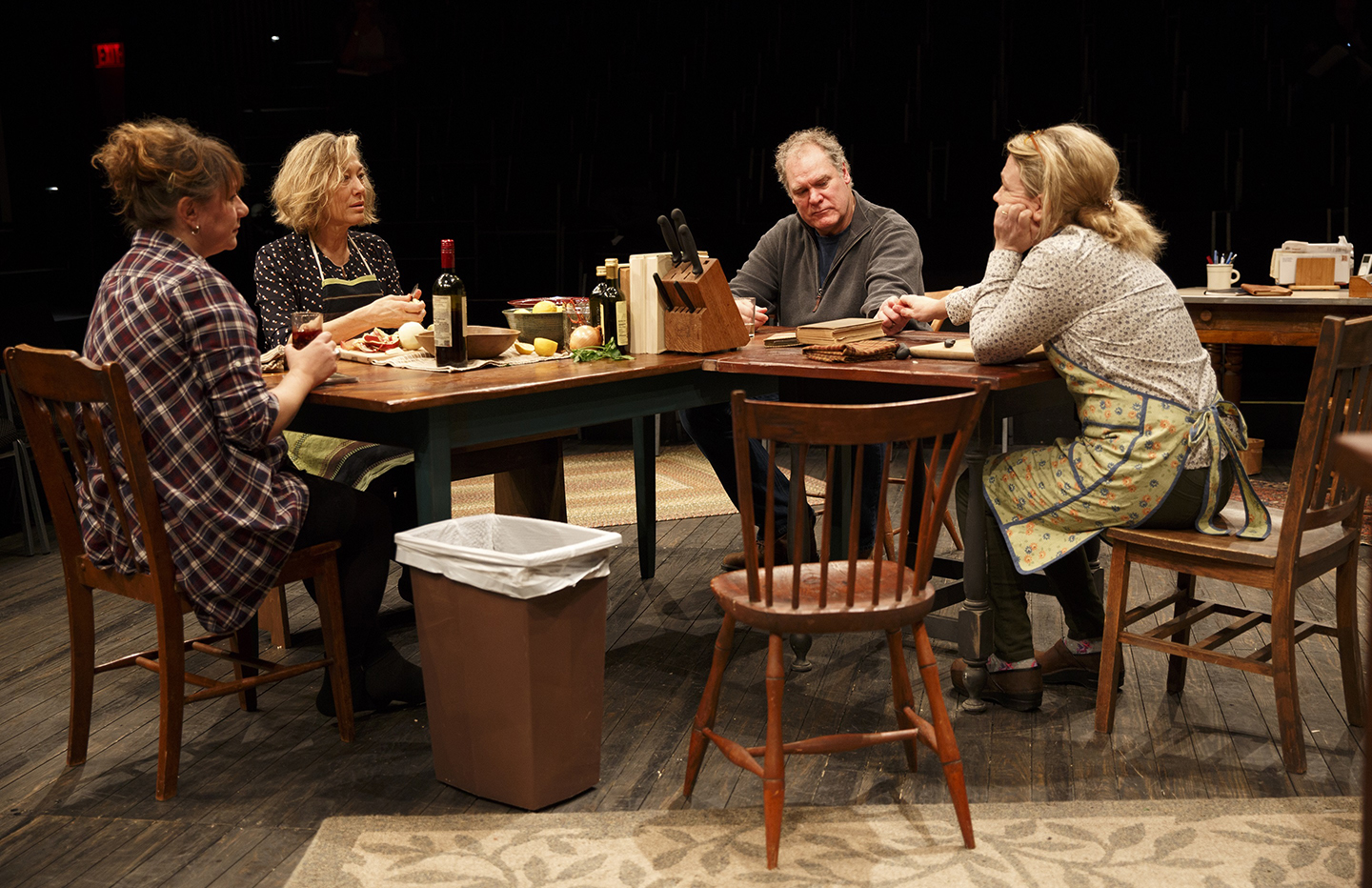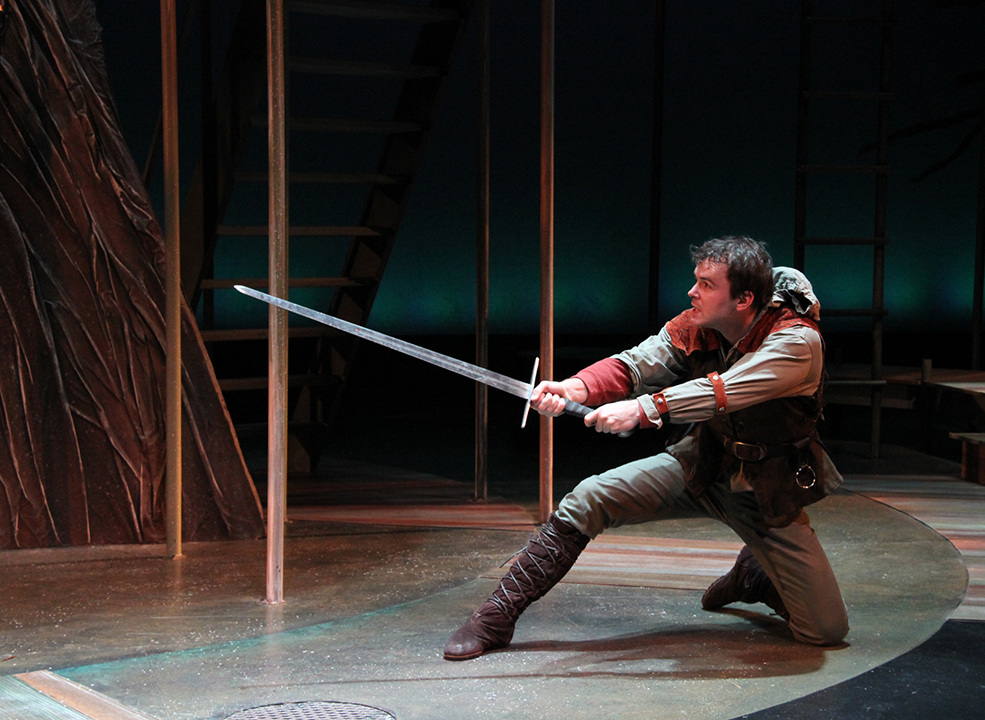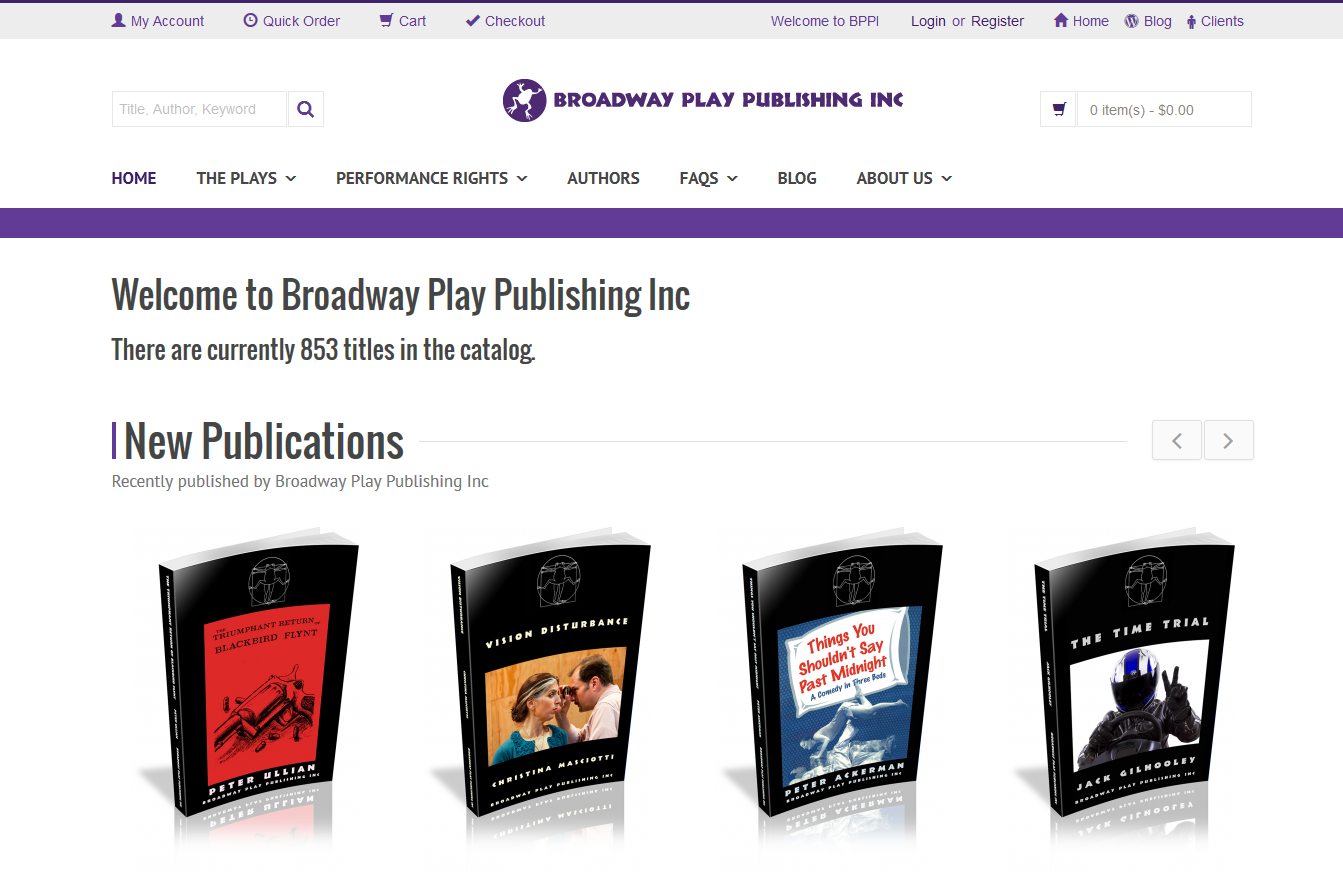BPPI playwrights Jon Klein and Laura Shamas discuss Jon's new play Young Robin Hood.
Laura: When did you first get the concept for Young Robin Hood and what was your inspiration?
Jon: I had always known that the legend of Robin Hood tapped into some basic themes and emotions that had the potential to affect young people. There's the adventure aspect, of course, but mostly the themes of rebellion and questioning authority that naturally become a part of growing up. Those issues are very specific to this story, and to both Robin and Marian (in this version, anyway) as they begin to enter adulthood. So this became an origin story, much like the recent reintroductions of other popular heroes like Batman or Spider Man.

Robin doesn't have super powers, but he begins to learn what power he does have, and how to use it. All kids of a certain age can relate to that. So can most adults, so I took pains to include an adult audience into the mix. Fatherhood and Motherhood have great importance in this version. How do parents deal with their kids when they begin to question the values they were taught? What happens when kids think their parents are wrong — and with good reason? Those ideas are in the play, but implied rather than preached. I wanted to make sure to add plenty of good old-fashioned fun and action, to make this play equally accessible and entertaining to both kids and adults.
Laura: Did you love Robin Hood as a child? Do you remember who you saw as your first Robin Hood or did you read about Robin Hood?
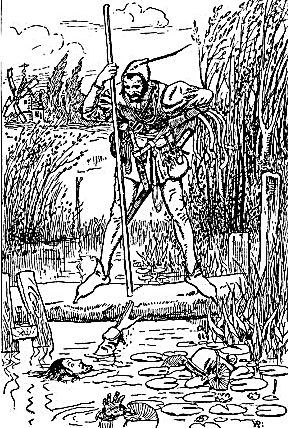
Jon: My first exposure was reading the tales. I remember that there was a wonderful book of the stories that had drawings by the master illustrator Howard Pyle. (I have his drawing of Robin getting dunked in the stream after the pikestaff duel with Little John, as a poster on my wall — a metaphor for playwriting if there ever was one.) But these traditional stories were of an adult Robin, who has already achieved notoriety in Nottingham. My exposure to the classic Errol Flynn movie came much later — and it's still the definitive version (sorry, Kevin Costner and Russell Crowe). But I was highly affected by Richard Lester's film Robin and Marian, which depicts those characters — played by Sean Connery and Audrey Hepburn — in late middle age. That film makes me cry whenever I watch it, and I've watched it a lot. Thinking about those characters at the end of their lives no doubt inspired me to wonder about them in the beginning of their adventures — including how they may have met. Also, I don't want to leave out one of my favorite Bugs Bunny cartoons, Rabbit Hood. Bugs outwits the Sheriff of Nottingham as he tries to steal carrots from the "Royal Garden." Errol Flynn (in a film clip borrowed from his famous movie) swings into a tree at the end of the cartoon. Bugs says, "Nah — couldn't be him."
Laura: How much research did you do into Robin Hood and what materials did you look at?
Jon: This was the fun part. There was historical research, of course, but when it comes to Robin Hood, you're dealing with a fictional character. He never existed, or else there were dozens of him, since "Robyn Hode" became the frequent pseudonym for a thief or scoundrel who entertained local townships by defying the regional laws, which were often considered to be unduly punitive. That affection for such scoundrels eventually evolved into stories about a thief who shares his loot with the local populace — quite unlikely! These stories were not written down but sung by wandering minstrels in the middle ages, and finally set down in print a couple of centuries after they were originally performed. The purely oral origins of these stories explain all the many variations of the tales. The only common factor appears to be Robin himself, a thief who safely hides in Sherwood Forest. Even his antagonist changes from tale to tale — sometimes it's the Sheriff of Nottingham, sometimes it's the conniving nobleman Guy of Gisbourne (portrayed by Basil Rathbone in the Errol Flynn version; the Sheriff only has a small, ineffective role in that film). As for Marian, her character was not part of the original ballads, and was added much later. That's why I felt free to make her the daughter of the Sheriff himself, so that she too can question his authority as a teenaged daughter — one who is also interested in a future legal profession. She is one of my favorite creations for this play. I borrowed some other characters from the original tales and tweaked them in different ways. The result is (I hope) a play that feels very contemporary but is still true to its literary sources.
Laura: The production at Round House Theatre in D.C. was gorgeous. One of the themes that was clear was care of the forest and ecology. Is that a theme you've written about before?
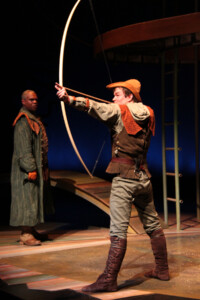
Jon: Derek Goldman, who directed the wonderful production at Round House Theatre , noticed that I had lots of references to the natural wonders of Sherwood Forest — trees, rivers, and several animals. He decided to embody these in a single actor with wonderful mimetic and movement abilities — Emma Jaster, who played the "Spirit of the Forest." Her extraordinary ability to transform herself into Marian's falcon, a stag, a bear (even a river!) gave several scenes a magical quality. The play does not require human embodiment of these natural elements, but it's one that I would like to encourage if possible. I guess my other famous foray into the world of ecology would be my play Betty The Yeti, which was introduced at the Humana Festival in Louisville and still gets produced (especially on college campuses). That was another play (I even subtitled it An Eco-Play) set in a forest — in this case representing the endangered old-growth forests of the Pacific Northwest, where I lived for a number of years. There's something pretty wonderful about moving a play out of the living room and setting it outside, in nature. Shakespeare discovered that when he wrote A Midsummer's Night Dream — magical things can happen in the forest.
Laura: The young people in your play have a great deal of agency. They create the action in the play. I know you have a strong philosophy about writing family plays and plays for youth audiences. Can you explain your philosophy a bit and why you think it matters to write plays for a youth audience?
Jon: Yes, it's the young people who really drive the story in this play. The parents are full of caution, restraint and warning — but if they got their way, that wouldn't make for a very interesting play! Again, I want to emphasize that the themes of responsibility and risk taking go hand in hand with the simple process of growing up. Theatre for young audiences is a marvelous thing to write and develop. Kids have a voracious appetite for good stories — they'll even read books if the stories are good enough! (Harry Potter, anyone? Hunger Games?)
They want to be entertained, they want to be excited, and they want to relate to the characters. As a result, they get very invested in the decisions that those characters make. And that creates very vocal responses in the audience, that endlessly delight me. They can hiss, boo, cheer, yell "watch out," and become completely immersed in the performance. And believe me, if kids get bored, I guarantee you it's the writer's fault! It's a challenge to write shows that entertain adults as well as their kids. The unexpected success of my stage adaptation of the fanciful novel Bunnicula is another example of that. The parents often dread accompanying their children to a show that has been advertised for kids, but they end up having just as good a time. I strived for that in Young Robin Hood as well and was pleased that its premiere occurred during the winter holidays at a theatre that was well known for its adult fare. It felt great to have my play featured in the midst of a season with plays by Rajiv Joseph and Gina Gionfriddo.
Laura: What was it like for you to finally see it with audiences?
Jon: It was a holiday show, and people were in the holiday spirit! Kids were off school, and parents were in a celebratory mood. These were very raucous audiences — how wonderful! During the run of the original production at Round House, I got a letter from a father who had seen Young Robin Hood with his son. The boy had been so enthralled with the show that he had been asking his dad to tell him the story every night at bedtime. So this father asked me for a copy of the script, so he and his son would be able to act it out. I was so happy to oblige! And even happier that this script will now be made available to the general public — I hope they'll enjoy reading it too!
